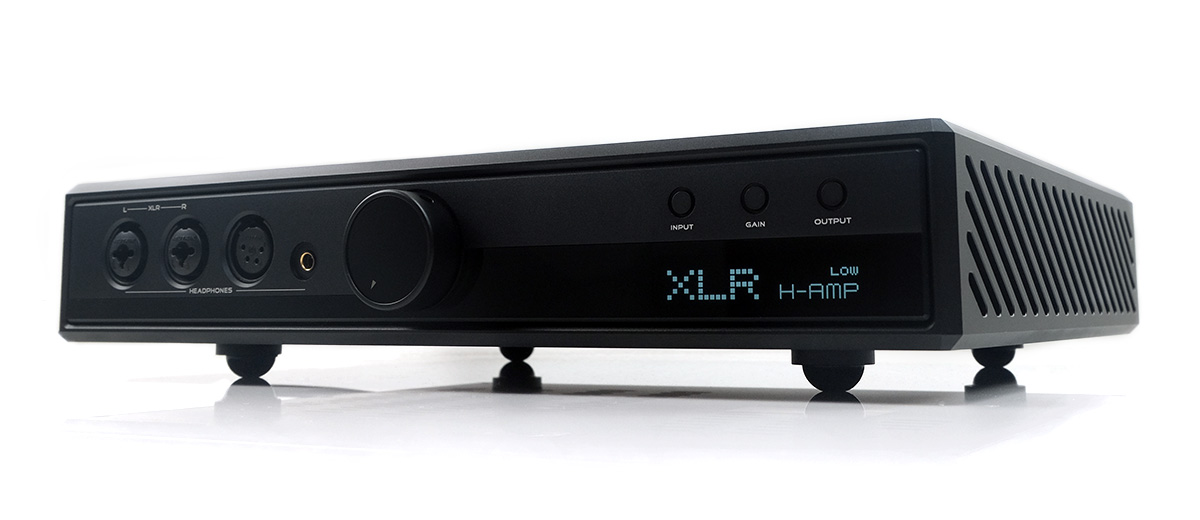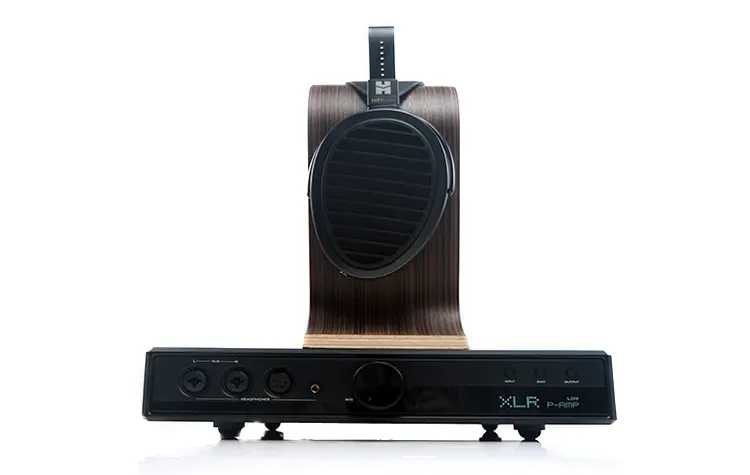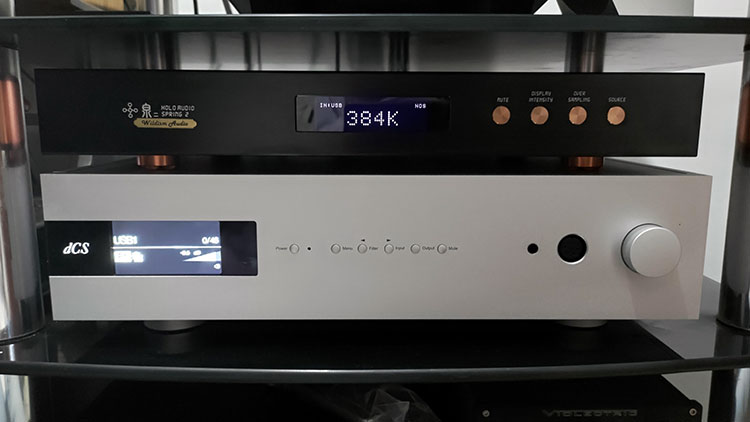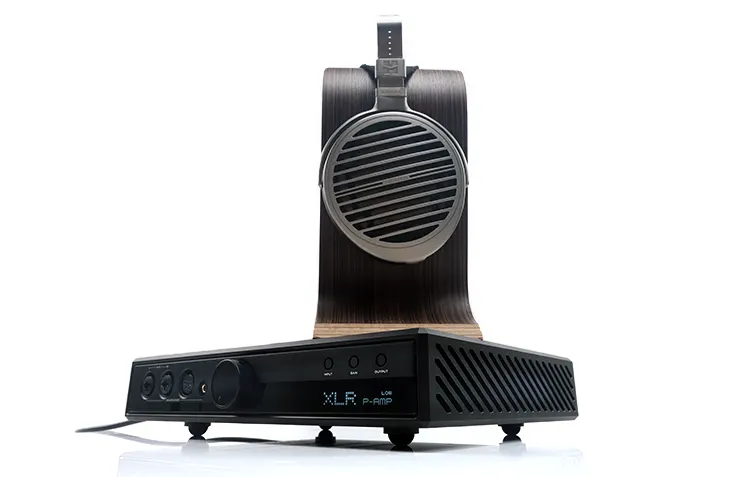Sound Impressions
The following Prelude sound impressions were completed using the HIFIMAN Susvara, the Arya Stealth Magnet Version, and the ZMF Headphones Caldera as our main headphone pairings combined with the Ladder Schumann as our system DAC.
Summary
The HIFIMAN Preludes ticks a lot of boxes for how I want a solid-state amplifier to sound and what I hope it can drive.
If you are a Susvara owner struggling to deal with the ultra-high prices of some of the more powerful dedicated amplifiers out there for your beloved flagship then the Prelude is an excellent answer. It has tons of power and excellent headroom for these demanding headphones.
This is also a smooth and very natural-sounding analog amp, with strong dynamics, a welcome low-noise floor, and impressive levels of transparency. So much so, that describing its tonal quality can often lead me down the road of describing the sound of the connected DAC.
It is really easy to fine-tune the output of the Prelude with a source and that is something we go into a lot more detail further down in this review. Pair it with the Susvara and you are even more likely to hear the change in performance with each DAC swap out.
My recommendation? A tube buffer DAC or better yet, an R-2R alternative for the analog tone and ideally one that delivers in terms of space and dynamic range.
The Prelude loves ‘big-sounding’ DACs such as the Holo Audio Spring 2 Wildism Edition. Especially so with the expansive Susvara but it is also ideal for keeping a lid on brighter cleaner headphones pairings such as the Abyss Diana TC.
Timbre
Somewhere in the middle of all this box-ticking is a core tonal signature and I did hint earlier that I would consider it smooth and natural rather than clean and rapier-like.
That is a conclusion coming from comparing it to the likes of the Ferrum OOR, Chord’s Anni, and the classic Violectric V281 all of which gave me a more confident understanding of what the Prelude was offering.
This is an amplifier that flows with weight rather than two-stepping your headphones with clinical precision like the OOR. However, it is not as weighty and bombastic on the lows compared to the V281 and the Anni.
Rather, the Prelude can sound fulsome throughout and compared to those two it has a more refined and agreeable mids and treble tone when paired with the Susvara.
There is a slightly relaxed and more refined presentation from the highs of the Susvara and the Arya Stealth compared to the OOR and with a better harmonic balance compared to the V281.
The Anni is warmer but the highs are a bit second nature to its bombastic lows with the same matched headphones whereas the Prelude did offer more headroom and air so higher-pitching instruments hit with more panache but stop short of sounding peaky.
To go back to DAC influence again, I did feel some delta-sigma DACs upset the treble balance a little with the Prelude compared to the R-2R alternatives but they also delivered a punchier set of lows.
For example, I could easily pick up on the additional energy and sheen from the ES9038PRO Little Dot DAC VII, and even the tube-buffered ES9028PRO inside the Cayin iDAC-6 MK2‘s sounded a little edgier on the highs.
Staging & Dynamics
I did a lot of switching of DACs and headphones to get some contextual benchmark of how well the Prelude staged.
It is more expansive than the OOR which delivers a comparatively intimate sound stage with a stronger center image focus, even with mildly relaxed DACs such as the Ladder Schumann.
However, expansive is more in terms of channel separation and width with the OOR edging it slightly for overall perceived articulation and micro detail when sharing the same DAC.
The Prelude is much better on the macro level and for me, a better match for the huge staging quality of the Susvara and to some extent the Caldera, at least in terms of width and general ambiance.
If you want a closer vocal imaging experience then the V281 and the OOR also do better here though at the cost of some presence for peripheral instruments on both the Susvara and the Arya Stealth which the Prelude excels at digging out.
There are deeper more forceful bass performances from competing amps. Both the Anni and the V291 have a more rounded and aggressive low-end delivery but the Prelude is not that far behind.
I would say some would argue the Prelude has the more balanced and realistic soundstage and certainly, in the case of the Anni, it does not feel as bloated on the lows.
Dynamics are excellent but again the DAC will shape this heavily. For example, the Schumann DAC is wide-sounding but lacks the holographic precise delivery of the Holo Audio Spring 2 which gives the Prelude and much more open 3-dimensional sound quality to headphone pairings.
Synergy
DAC Pairings
The Prelude is a reasonably transparent analog headphone amplifier so the DAC pairing will play a fairly significant role in the output performance.
I ran the Prelude with the Susvara as my main pairing through four DACs and quickly concluded that the Prelude/Susvara combo would pair better for my preferences with smoother more analog-sounding R-2R DACs over the cleaner but at times brighter-sounding delta-sigma units I compared them with.
Little Dot DAC VII
For example, the Little Dot DAC VII has a wonderfully punchy low-end with excellent speed when paired with the Prelude/Susvara combo. However, its ES9038PRO chipset was brighter-sounding on the highs compared to the Ladder Schumann and Holo Audio Spring 2 Wildism Edition R-2R DACs.
It offered a generally cleaner more neutral tone throughout, and though impactful there was less body on the lows compared to the Schumann DAC. It is not as warm sounding through the Susvara mids with an enhanced treble presence that I found comparatively harder-edged and overly energetic.
Cayin iDAC-6 MK2
The Cayin iDAC-6 MK2 also delivered a more dynamic and punchier set of lows on the Prelude/Susvara combo and with more treble extension than the Schumann DAC combo.
The vocal imaging is more intimate than the R-2R DACs when paired with the Prelude but the note weight and timbre are not as rich sounding with its line-out. The better pairing here is the better Vrms output from the Pre-out which has more bloom in the mids timbre.
You need to switch the iDAC-6 MK2 to Vacuum mode to get a more attractive harmonic balance in the highs. The solid-state or transistor mode delivered some relative sharpness that the Prelude and Susvara picked up on right away.
Holo Audio Spring DAC 2 Wildism Edition
The Holo Audio Spring DAC 2 Wildism Edition was the most dynamic and open-sounding pairing with the Prelude and made the Schumann DAC sound slightly veiled in the mids by comparison.
It does well for both the transient speed and expansive holographic staging with the Prelude delivering all of that to the Susvara. There is much better spacing and a more refined set of mids and highs. The treble from the Susvara/Prelude has the perfect balance, not too smoothed over, and lively without sounding digital or peaky.
The Susvara note weight from this setup is just a little north of neutral but not as thick as the Schumann DAC/Prelude pairing.
Chord Electronics Qutest DAC
The Chord Electronics Qutest DAC delivered a tall and deep, detailed sound with great center imaging on the Prelude/Susvara combo. It is not as wide and airy as the Holo Audio setup but a little more forceful through the bass and mids with a vocal positioning more to the intimate side.
Certainly, it is more resolving and detailed sounding compared to the Schumann DAC but its aggressive or perky nature might not appeal to those who enjoy a more relaxed-sounding Susvara.
The treble is a bit brighter and not as liquid in tone as the Holo Audio/Prelude combo but it’s more natural and refined sounding compared to the iDAC-6 MK2 and Little Dot DAC VII performances.
Power
Honestly, like the OOR, the Prelude can drive just about any headphone be it planar or dynamic, low or high impedance.
At up to 10W into 32Ω down to 1W for 300Ω headphones and a median rating of 6W into a 64Ω load, you get no shortage of dynamic range and it is almost perfect for the likes of the 60Ω Susvara. I have also not experienced any clipping to date with any headphones tested.
Using the Prelude’s high gain balanced mode output with a balanced line input from the DAC side the volume sat around 1-2 pm maximum for comfortable listening levels from the Susvara. I also had to dip the volume to a slightly lower level at around noon on the dial for the 69Ω 90 dB/mW Abyss Headphones Diana TC.
These are two planar headphones that I rate with fairly low sensitivity levels and the Prelude barely broke a sweat with either.
Of course, with the excellent levels of transparency, it may well be the DAC behind the Prelude that will make or break your satisfaction levels with the two headphone pairings.
My personal preference was to go with the juicier warmer Schumann DAC with the Diana TC and the more expansive and open-sounding Holo Audio Spring DAC 2 Wildism Edition with the Susvara.
The Diana TC leans brighter and leaner for me compared to the Susvara so the Schumann’s thicker sound signature combined with the excellent dynamics from the Prelude keep any potential sharpness in check.
The Holo Audio’s superior holographic staging quality and better midrange separation suited the Prelude/ Susvara combo a lot better.
High Impedance Dynamic
Dynamic driver headphones were not such an emphatic victory. However, this is about the Prelude being compared to Cayin’s HA-300MK2 SETA amplifier using the ZMF Headphones Atrium.
The Cayin/Atrium pairing with the Holo Audio DAC is special for me in terms of holographic imaging. It has this enveloping creamy quality to its performance that is just beautiful.
There is no question the Prelude can handle the 300Ω Atrium with ease in terms of dynamics and clarity and I would say the bass snap is both faster and more impactful also.
However, it doesn’t have the same immersive or ambient soundstage as the Cayin amp delivers with the same DAC. Still, you have to pay double the Prelude cost to experience that type of performance which may well be a strong caveat for some.






